|
Your search criteria found 648 images Mission |
| My List |
Addition Date | Target | Mission | Instrument |
Size
|

|
1998-06-17 | Europa |
Galileo |
Near Infrared Mapping Spectrometer |
820x470x1 |

|
|||||

|
1998-07-02 | Io |
Galileo |
Solid-State Imaging |
581x900x3 |

|
|||||

|
1998-07-02 | Io |
Galileo |
800x800x1 | |

|
|||||

|
1998-07-15 | Ganymede |
Galileo |
Solid-State Imaging |
392x398x1 |

|
|||||

|
1998-07-15 | Ganymede |
Galileo |
Solid-State Imaging |
707x1049x1 |

|
|||||

|
1998-07-15 | Ganymede |
Galileo |
Solid-State Imaging |
813x753x1 |

|
|||||

|
1998-07-15 | Ganymede |
Galileo |
Solid-State Imaging |
392x398x1 |

|
|||||

|
1998-07-15 | Ganymede |
Galileo |
Solid-State Imaging |
692x480x3 |

|
|||||

|
1998-07-15 | Ganymede |
Galileo |
Solid-State Imaging |
615x519x1 |
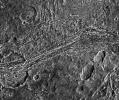
|
|||||

|
1998-07-15 | Ganymede |
Galileo |
Solid-State Imaging |
800x798x1 |
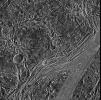
|
|||||

|
1998-07-15 | Ganymede |
Galileo |
Solid-State Imaging |
531x361x1 |

|
|||||

|
1998-07-15 | Ganymede |
Galileo |
Solid-State Imaging |
949x559x1 |

|
|||||

|
1998-07-15 | Ganymede |
Galileo |
Solid-State Imaging |
506x360x1 |

|
|||||

|
1998-07-15 | Ganymede |
Galileo |
Solid-State Imaging |
797x798x1 |

|
|||||

|
1998-07-15 | Ganymede |
Galileo |
Solid-State Imaging |
706x551x1 |

|
|||||

|
1998-07-15 | Ganymede |
Galileo |
Solid-State Imaging |
782x784x1 |

|
|||||

|
1998-07-15 | Ganymede |
Galileo |
Solid-State Imaging |
900x600x1 |

|
|||||

|
1998-07-15 | Ganymede |
Galileo |
Solid-State Imaging |
790x1413x1 |

|
|||||

|
1998-08-03 | Ganymede |
Galileo |
Solid-State Imaging |
800x800x3 |

|
|||||

|
1998-09-15 | J Rings |
Galileo |
Solid-State Imaging |
2663x1418x1 |

|
|||||

|
1998-09-15 | J Rings |
Galileo |
Solid-State Imaging |
1078x636x1 |

|
|||||

|
1998-09-15 | J Rings |
Galileo |
Solid-State Imaging |
2016x1529x3 |

|
|||||

|
1998-09-15 | Amalthea |
Galileo |
Solid-State Imaging |
1539x1066x1 |

|
|||||

|
1998-09-15 | Amalthea |
Galileo |
Solid-State Imaging |
1539x802x1 |

|
|||||

|
1998-09-15 | Io |
Galileo |
Solid-State Imaging |
471x404x3 |

|
|||||

|
1998-09-15 | J Rings |
Galileo |
Solid-State Imaging |
2560x1920x3 |
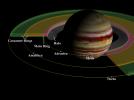
|
|||||

|
1998-09-15 | J Rings |
Galileo |
Solid-State Imaging |
1800x2700x3 |

|
|||||

|
1998-10-13 | Callisto |
Galileo |
800x799x1 | |

|
|||||

|
1998-10-13 | Callisto |
Galileo |
Solid-State Imaging |
1422x1252x1 |

|
|||||

|
1998-10-13 | Callisto |
Galileo |
Solid-State Imaging |
800x799x1 |

|
|||||

|
1998-10-13 | Callisto |
Galileo |
Solid-State Imaging |
720x703x1 |

|
|||||

|
1998-10-13 | Europa |
Galileo |
Solid-State Imaging |
2686x2494x1 |

|
|||||

|
1998-10-13 | Callisto |
Galileo |
Solid-State Imaging |
6490x13101x1 |

|
|||||

|
1998-10-13 | Io |
Galileo |
Solid-State Imaging |
1054x352x3 |

|
|||||

|
1998-10-13 | Jupiter |
Galileo |
Solid-State Imaging |
880x620x3 |

|
|||||

|
1998-10-13 | Io |
Galileo |
Solid-State Imaging |
689x350x3 |

|
|||||

|
1998-10-13 | Jupiter |
Galileo |
Solid-State Imaging |
1152x855x1 |

|
|||||

|
1998-10-13 | Jupiter |
Galileo |
Solid-State Imaging |
592x537x3 |
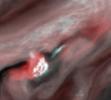
|
|||||

|
1998-10-13 | Europa |
Galileo |
Solid-State Imaging |
747x800x1 |

|
|||||

|
1998-10-14 | Jupiter |
Galileo Hubble Space Telescope |
850x950x3 | |

|
|||||

|
1998-10-21 | Callisto |
Galileo |
2220x1700x3 | |

|
|||||

|
1998-11-03 | Ida |
Galileo |
Solid-State Imaging |
580x400x3 |
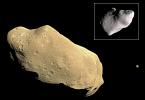
|
|||||

|
1998-11-24 | Europa |
Galileo |
Solid-State Imaging |
1950x850x3 |

|
|||||

|
1998-12-07 | Europa |
Galileo |
Solid-State Imaging |
633x900x1 |

|
|||||

|
1998-12-07 | Europa |
Galileo |
Solid-State Imaging |
453x597x1 |

|
|||||

|
1998-12-07 | Europa |
Galileo |
Solid-State Imaging |
678x900x1 |

|
|||||

|
1998-12-07 | Europa |
Galileo |
Solid-State Imaging |
1231x558x3 |
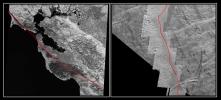
|
|||||

|
1998-12-07 | Europa |
Galileo |
Solid-State Imaging |
1152x830x1 |

|
|||||

|
1998-12-07 | Europa |
Galileo |
Solid-State Imaging |
1152x507x3 |

|
|||||

|
1998-12-07 | Callisto |
Galileo |
Solid-State Imaging |
1152x884x3 |

|
|||||

|
1998-12-07 | Callisto |
Galileo |
Solid-State Imaging |
1152x884x3 |

|
|||||

|
1998-12-07 | Jupiter |
Galileo |
Solid-State Imaging |
900x900x3 |

|
|||||

|
1998-12-07 | Io |
Galileo |
Solid-State Imaging |
1152x887x3 |

|
|||||

|
1998-12-07 | Europa |
Galileo |
Solid-State Imaging |
2476x1988x1 |
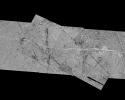
|
|||||

|
1998-12-07 | Europa |
Galileo |
Solid-State Imaging |
1152x626x3 |

|
|||||

|
1998-12-07 | Jupiter |
Galileo |
Photopolarimeter-Radiometer |
1500x2571x3 |

|
|||||

|
1999-01-18 | Europa |
Galileo |
Solid-State Imaging |
988x900x1 |

|
|||||

|
1999-01-18 | Europa |
Galileo |
Solid-State Imaging |
700x540x1 |

|
|||||

|
1999-01-18 | Io |
Galileo |
Solid-State Imaging |
1152x614x1 |

|
|||||

|
1999-01-18 | Europa |
Galileo |
Solid-State Imaging |
1152x696x3 |

|
|||||

|
1999-01-18 | Europa |
Galileo |
Solid-State Imaging |
1050x520x3 |

|
|||||

|
1999-01-18 | Ganymede |
Galileo |
Solid-State Imaging |
687x687x3 |

|
|||||

|
1999-01-18 | Io |
Galileo |
Solid-State Imaging |
800x800x3 |

|
|||||

|
1999-01-18 | Io |
Galileo |
Solid-State Imaging |
708x526x3 |

|
|||||

|
1999-01-18 | Europa |
Galileo |
Solid-State Imaging |
1192x1636x3 |

|
|||||

|
1999-03-18 | Jupiter |
Galileo |
Solid-State Imaging |
640x485x1 |

|
|
||||

|
1999-04-15 | Jupiter |
Galileo |
Solid-State Imaging |
640x485x1 |

|
|
||||

|
1999-08-27 | Jupiter |
Galileo |
Solid-State Imaging |
1300x1200x3 |

|
|||||

|
1999-08-27 | Jupiter |
Galileo |
Solid-State Imaging |
2200x1200x3 |

|
|||||

|
1999-08-27 | Europa |
Galileo |
Solid-State Imaging |
2530x1327x3 |

|
|||||

|
1999-08-27 | Io |
Galileo |
Solid-State Imaging |
2796x2796x3 |

|
|||||

|
1999-08-27 | Io |
Galileo |
Solid-State Imaging |
2796x2796x3 |
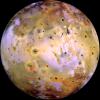
|
|||||

|
1999-08-27 | Io |
Galileo |
Solid-State Imaging |
2000x1380x3 |
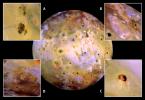
|
|||||

|
1999-09-27 | Jupiter |
Galileo |
Solid-State Imaging |
1200x700x1 |

|
|||||

|
1999-09-30 | Europa |
Galileo |
Near Infrared Mapping Spectrometer |
837x796x3 |

|
|||||

|
1999-10-07 | Callisto |
Galileo |
Solid-State Imaging |
449x449x1 |

|
|||||

|
1999-10-07 | Ganymede |
Galileo |
Solid-State Imaging |
590x900x1 |

|
|||||

|
1999-10-07 | Ganymede |
Galileo |
Solid-State Imaging |
1078x900x1 |

|
|||||

|
1999-10-07 | Ganymede |
Galileo |
Solid-State Imaging |
610x900x1 |

|
|||||

|
1999-10-07 | Callisto |
Galileo |
Solid-State Imaging |
1440x669x1 |

|
|||||

|
1999-10-08 | Io |
Galileo |
Solid-State Imaging |
1040x349x3 |

|
|||||

|
1999-10-08 | Io |
Galileo |
Solid-State Imaging |
329x431x3 |

|
|||||

|
1999-10-08 | Io |
Galileo |
Solid-State Imaging |
879x202x1 |

|
|||||

|
1999-10-08 | Io |
Galileo |
Solid-State Imaging |
967x395x3 |

|
|||||

|
1999-10-08 | Io |
Galileo |
Solid-State Imaging |
398x398x3 |

|
|||||

|
1999-10-08 | Io |
Galileo |
Solid-State Imaging |
336x436x3 |

|
|||||

|
1999-10-25 | Io |
Galileo |
Solid-State Imaging |
797x240x1 |

|
|||||

|
1999-11-04 | Io |
Galileo |
Solid-State Imaging |
1969x1684x3 |

|
|||||

|
1999-11-04 | Io |
Galileo |
Near Infrared Mapping Spectrometer |
959x581x3 |

|
|||||

|
1999-11-19 | Io |
Galileo |
Solid-State Imaging |
1114x567x3 |

|
|||||

|
1999-11-19 | Io |
Galileo |
Solid-State Imaging |
682x970x3 |

|
|||||

|
1999-11-19 | Io |
Galileo |
Solid-State Imaging |
1079x1211x3 |

|
|||||

|
1999-11-19 | Io |
Galileo |
Solid-State Imaging |
1286x1447x1 |

|
|||||

|
1999-11-19 | Io |
Galileo |
Near Infrared Mapping Spectrometer |
1157x1241x3 |

|
|||||

|
1999-11-19 | Io |
Galileo |
Near Infrared Mapping Spectrometer |
1157x841x3 |

|
|||||

|
1999-11-19 | Io |
Galileo |
Near Infrared Mapping Spectrometer |
841x631x3 |

|
|||||

|
1999-12-17 | Io |
Galileo |
Solid-State Imaging |
1152x613x1 |

|
|||||

|
1999-12-17 | Io |
Galileo |
Solid-State Imaging |
797x900x3 |

|
|||||

|
1999-12-17 | Io |
Galileo |
Solid-State Imaging |
1152x280x1 |

|
|||||

|
1999-12-17 | Io |
Galileo |
Solid-State Imaging |
797x398x1 |

|
|||||

|
 |
 |
 |
 |
 |
 |
 |

|
| 1-100 | 101-200 | 201-300 | 301-400 | 401-500 | 501-600 | 601-700 |
| Currently displaying images: 401 - 500 of 648 |